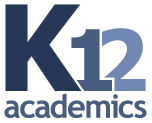In a study on the correlation between the price of higher education and enrollment rates, Donald Heller finds that the amount of financial aid available for students is a strong factor in enrollment rates.
Different factors have different effects on financial aid:
Decreases in the amount of financial aid leads to decreases in enrollment. However, different types of financial aid have differing effects. Grant awards tend to have a stronger effect on enrollment rates.
Changes in tuition and financial aid affect poorer students more than they affect students with higher incomes.
In terms of race, changes in financial aid affects black students more than it affects white students.
Changes in financial aid affect students from community colleges more than students from four-year schools.
Need-blind admissions
Need-blind admissions do not consider a student's financial need. In a time when colleges are low on financial funds, it is difficult to maintain need-blind admissions because schools cannot meet the full need of the poor students that they admit.
There are different levels of need-blind admissions. Few institutions are fully need-blind. Others are not need-blind for students who apply after certain deadlines, international students, and students from a waitlist. Some institutions are moving away from need-blind admissions so that they can fulfill the full need of the students that are admitted. Meeting the full-need will probably increase the funds for financial aid. For example, Wesleyan University is only need-blind if it has enough money to satisfy the full need of admitted students.

